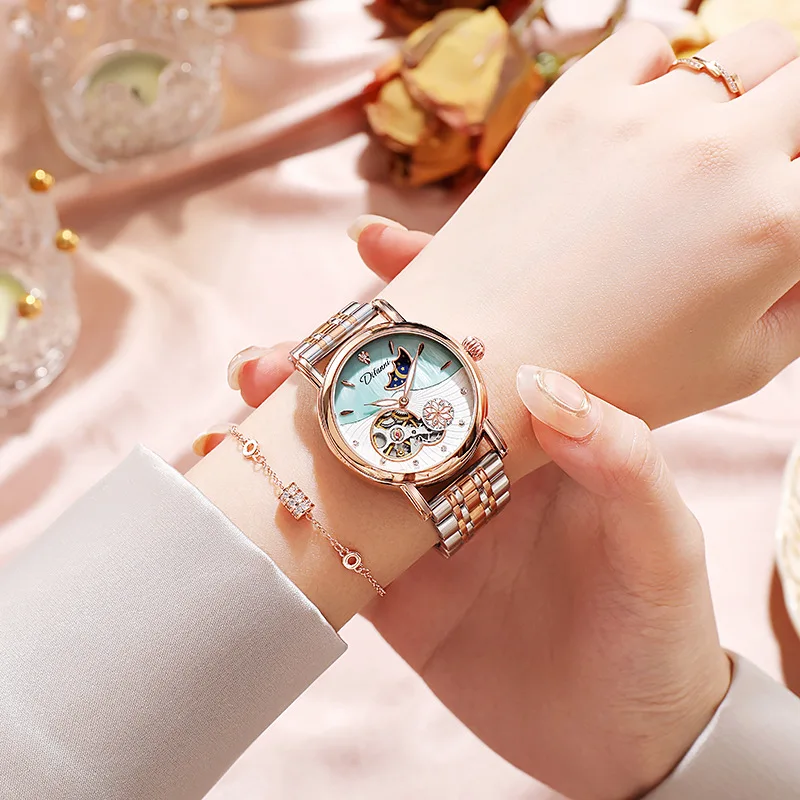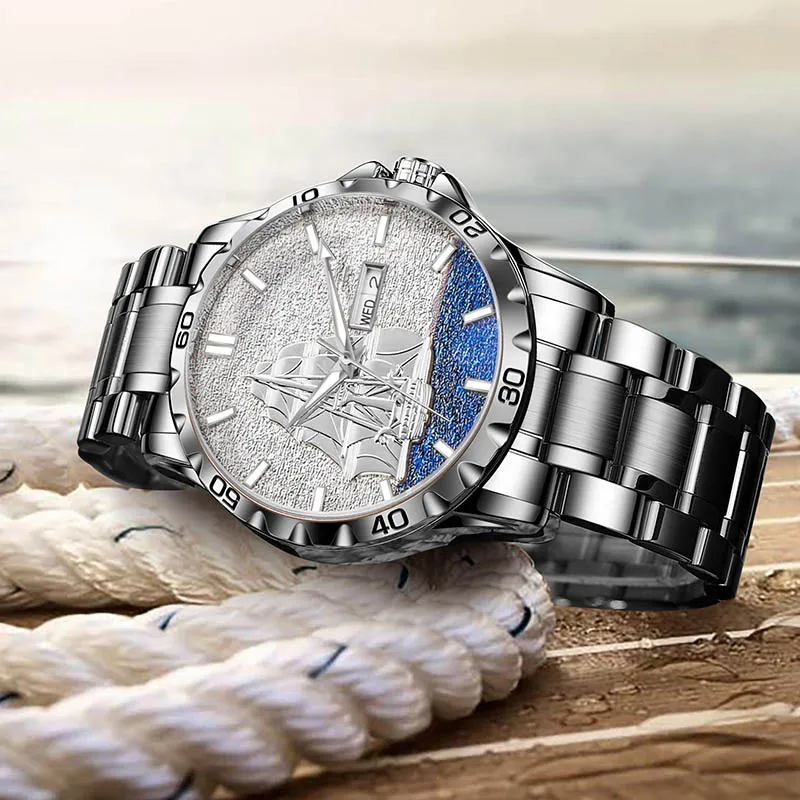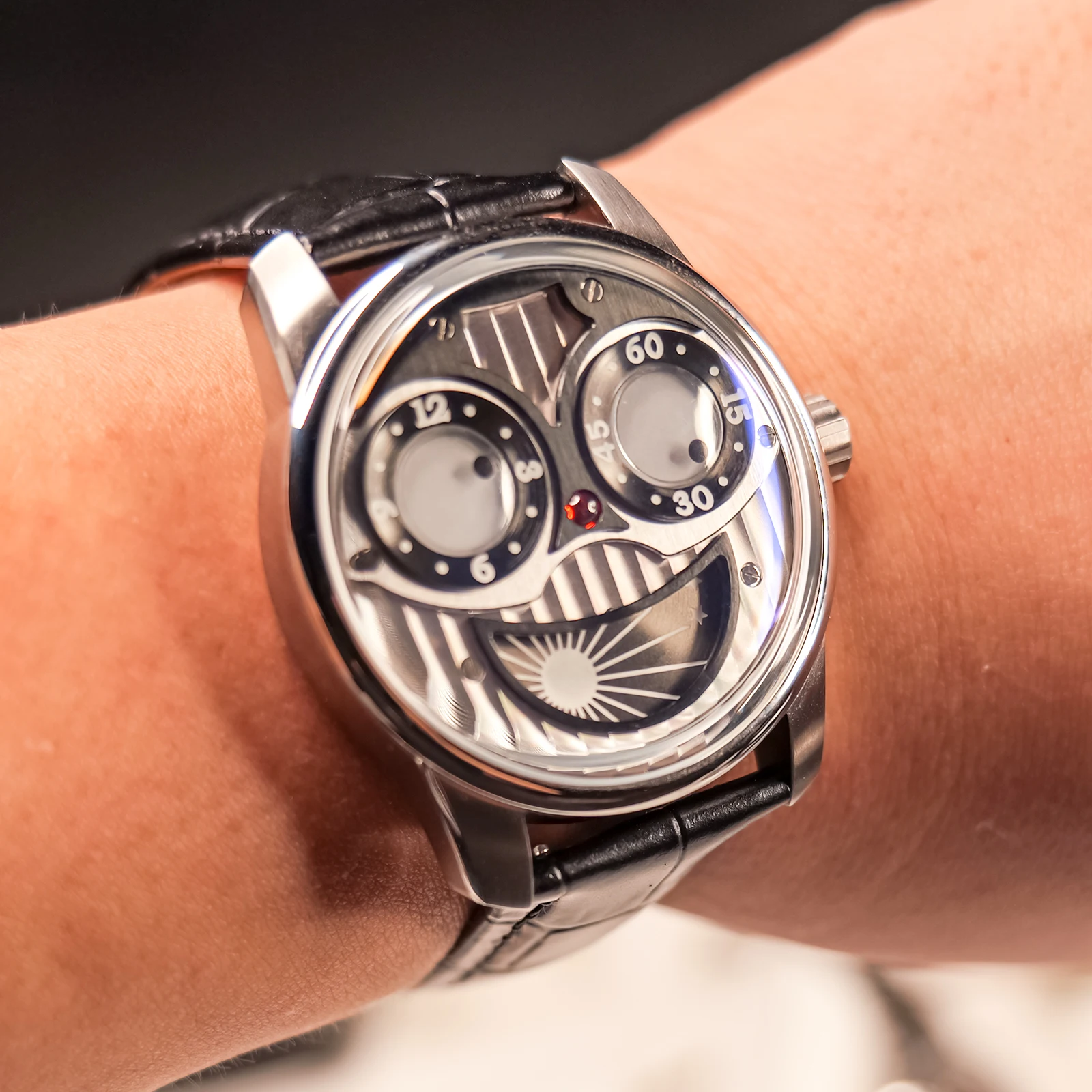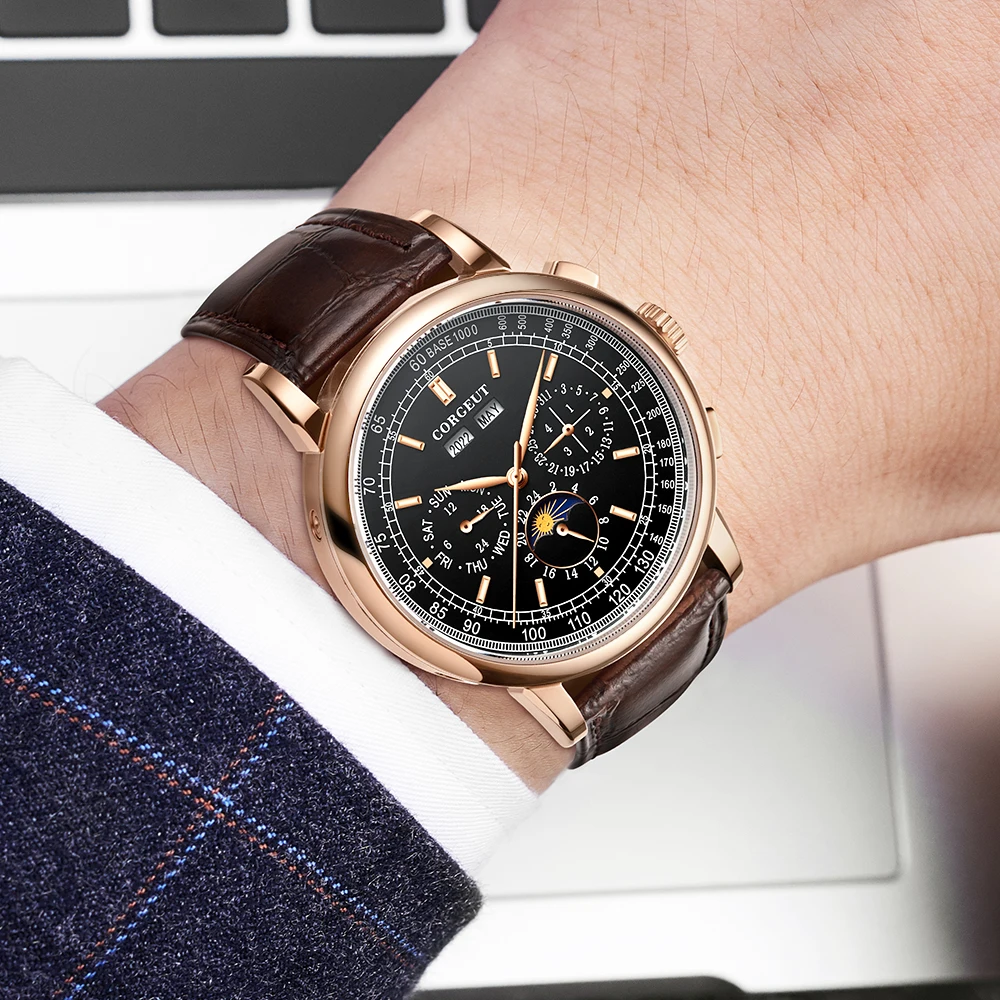Understanding Lunar Timepieces: The Difference Between Moonphase and Lunar Calendar Watches
Throughout human history, our fascination with the night sky has led to remarkable innovations in timekeeping. Among these achievements, watches that track celestial bodies stand out as perfect blends of art and engineering. Two particularly captivating complications—moonphase displays and lunar calendars—offer wearers a connection to ancient traditions of astronomical observation.
While often confused, moonphase watches and lunar calendar watches serve distinct purposes. A standard moonphase watch tracks the 29.5-day lunar cycle, displaying the current phase of the moon as it appears in the sky. In contrast, lunar calendar watches incorporate more comprehensive systems, often integrating traditional calendar systems based on lunar cycles that have guided cultures for millennia.
The tradition of tracking lunar movements dates back to ancient civilizations that relied on moon cycles for planting crops, religious ceremonies, and navigation. Today’s wristwatches continue this legacy through intricate mechanical systems that mirror cosmic movements.
Key Distinction: Moonphase watches display the current phase of the moon using a simple rotating disc mechanism, while lunar calendar watches incorporate comprehensive calendar systems based on lunar cycles, often with additional indicators for zodiac signs, seasons, or leap months.
In this guide, we’ll explore both types of celestial timepieces, examining their mechanics, history, artistic expressions, and practical considerations to help you appreciate—and perhaps select—your own piece of the cosmos for your wrist.
The historical significance of traditional dive watches parallels the development of celestial timekeeping, as both represent humanity’s efforts to master natural elements through mechanical ingenuity. Similarly, the evolution of dive watch technology shares the same spirit of innovation that drives the continuing refinement of moonphase complications.
The Moonphase Complication: How It Works
A moonphase watch is a specialized timepiece featuring a complication that displays the current phase of the moon as it appears in the night sky. This elegant feature tracks the lunar cycle, which spans approximately 29.5 days from one new moon to the next.
The mechanical magic behind most moonphase displays involves a surprisingly simple yet ingenious system. At its heart is a 59-tooth gear wheel that turns once every two lunar cycles (59 days). This gear advances a disc containing two identical moon images by one tooth each day, creating a visual representation of the moon’s changing appearance.
The standard mechanism works like this: As the gear advances, a curved aperture in the watch dial reveals portions of the rotating moon disc beneath it. When the full moon image is centered in the window, the watch displays a full moon. As the disc continues to rotate, the moon appears to wane until it disappears completely (new moon), then begins to wax again as the second moon image enters the aperture.
Watchmakers typically employ two primary display styles for moonphase complications:
Bosom or Window Display: The most traditional design features a curved aperture (resembling a bosom or arch) that shows the current moon phase against a decorated night sky background. This style creates the effect of viewing the moon through a window.
Radial or Hand Display: Less common but equally elegant, this style uses a hand pointing to the current moon phase on a semicircular or circular scale around the dial’s edge.
The standard 59-tooth moonphase mechanism, while beautiful, has a slight inaccuracy. The actual lunar cycle is 29.53 days, not precisely 29.5 days. This discrepancy means most moonphase watches require adjustment approximately every 2.5 years to maintain astronomical accuracy.
For those interested in exploring these celestial timepieces, our moonphase automatic watch collection showcases various interpretations of this poetic complication across different styles and price points.
The Evolution of Moonphase Watches: From Astronomical Tools to Wrist Accessories
The story of moonphase timekeeping begins with ancient astronomical calculators. The Antikythera mechanism, dating back to around 100 BCE, represents one of humanity’s earliest attempts to mechanically track celestial bodies, including lunar phases. This remarkable Greek device demonstrated our ancestors’ understanding of astronomical cycles and their importance for religious and agricultural purposes.
During the medieval period, astronomical clocks began appearing in European cathedrals, where elaborate dials tracked the moon’s journey across the sky. These monumental timepieces not only marked hours but also displayed complex astronomical information, cementing the relationship between timekeeping and celestial observation.
By the 17th and 18th centuries, skilled watchmakers began incorporating moonphase displays into pocket watches, transforming astronomical tools into portable personal accessories. These early examples required remarkable mechanical ingenuity, especially given the size constraints.
The transition to wristwatches in the early 20th century presented new challenges for including moonphase complications. The reduced space demanded even greater miniaturization, making moonphase wristwatches particularly impressive feats of horological engineering.
Today’s moonphase watches blend this rich heritage with modern aesthetics and improved engineering. What was once purely functional has evolved into a celebration of watchmaking tradition and artistic expression. The moonphase has become one of the most visually distinctive and romantically appealing complications in modern horology, bridging our ancient connection to the night sky with contemporary craftsmanship.
The development of these celestial timepieces aligns with other important horological innovations documented in our timeline of diving watch innovations, showcasing how watchmaking traditions continuously evolve while honoring their historical roots.

Lunar Calendar Watches: Beyond Simple Moonphase
While standard moonphase watches track the moon’s visual appearance, lunar calendar watches represent a significantly more complex horological achievement. These sophisticated timepieces go beyond showing the current phase of the moon to incorporate comprehensive calendar systems based on lunar cycles that have guided various cultures throughout history.
A true lunar calendar watch integrates the moon’s phases with additional calendar functions, creating a cohesive timekeeping system based on the moon’s orbit rather than the sun’s. These watches often display information such as lunar months, dates according to lunar calendars, and sometimes even corresponding zodiac signs or seasonal indications.
The mechanical complexity required for lunar calendar watches far exceeds that of simple moonphase displays. Rather than merely tracking a 29.5-day cycle with a rotating disc, these timepieces must account for the varying lengths of lunar months and the complex relationships between lunar and solar calendars.
Distinguishing features of lunar calendar watches include:
- Complete tracking of lunar months rather than just moon phases
- Display of dates according to specific lunar calendar systems
- Indication of zodiac signs or traditional seasonal markers
- Accommodation of leap months in traditional lunar systems
- Integration with other calendar complications such as perpetual calendars
Many luxury watchmakers combine lunar calendar functions with perpetual calendars, creating extraordinarily sophisticated timepieces that can track both solar and lunar calendar systems simultaneously. These watches represent the pinnacle of calendar complications, often commanding premium prices due to their mechanical complexity and cultural significance.
For enthusiasts interested in advanced timekeeping systems, our perpetual calendar automatic watch collection features timepieces that incorporate both solar and lunar calendar elements.
The Chinese Lunar Calendar in Horology
The Chinese lunar calendar represents one of the most intricate lunar timekeeping systems incorporated into modern watches. Dating back over 3,500 years, this calendar combines lunar cycles with solar terms to create a comprehensive system that has guided agricultural activities, festivals, and daily life throughout Chinese history.
When implemented in wristwatches, the Chinese lunar calendar typically includes several distinctive elements:
First, these watches often display the current lunar month and date according to the traditional Chinese calendar, which begins with the new moon and divides each year into 12 (or sometimes 13) lunar months.
Second, many Chinese lunar calendar watches incorporate the Chinese zodiac system, displaying the current year’s animal sign from the 12-year cycle (rat, ox, tiger, etc.). Some more elaborate pieces also indicate the corresponding element (wood, fire, earth, metal, water) from the traditional five-element system.
Third, sophisticated examples may include indications for leap months (intercalary months), which are added approximately every three years to reconcile the lunar calendar with solar seasons.
The technical challenge of incorporating this system into a mechanical watch is significant. The Chinese calendar follows a 60-year cycle created by combining the 12-year zodiac cycle with the 10-year cycle of heavenly stems. Programming this complexity into a mechanical movement requires extraordinary ingenuity and precision.
For collectors and those with cultural connections to this calendar system, these watches offer both practical utility and profound cultural significance. Understanding the differences between various day-date vs. triple calendar watches provides additional context for appreciating the complexity of these lunar calendar implementations.
Engineering Precision: The Pursuit of Astronomical Accuracy
The quest for perfect astronomical accuracy in moonphase watches represents one of watchmaking’s most fascinating technical challenges. While standard moonphase mechanisms provide adequate accuracy for casual use, horological innovators continuously push boundaries to create increasingly precise lunar displays.
The traditional 59-tooth gear mechanism, while elegant in its simplicity, accumulates an error of one day approximately every 2.5 years due to the slight discrepancy between its 29.5-day cycle and the actual 29.53-day lunar cycle. For many wearers, this minor deviation is acceptable, requiring occasional adjustment.
However, watchmakers seeking greater precision have developed advanced mechanisms using different gear ratios. The most common improved system employs a 135-tooth gear that advances the moon disc with much greater accuracy, resulting in an error of just one day every 122 years—a significant improvement that essentially means the watch will remain accurate throughout the owner’s lifetime.
At the pinnacle of precision, certain haute horlogerie manufacturers create astronomical moonphase displays with extraordinary accuracy, some requiring adjustment only once in a thousand years or more. These exceptional timepieces often employ complex gear trains specifically calculated to minimize deviation from the true lunar cycle.
| Moonphase Mechanism | Accuracy | Adjustment Needed |
|---|---|---|
| Standard (59-tooth) | 1 day error every 2.5 years | Every 2-3 years |
| Advanced (135-tooth) | 1 day error every 122 years | Once in a lifetime |
| Astronomical | 1 day error in 1,000+ years | Once in multiple generations |
The extraordinary durability of these precision mechanisms aligns well with the question of how long automatic watches last, as both considerations reflect the long-term value proposition of fine mechanical timepieces designed to function for generations.
The Artistry of Lunar Displays: Design and Aesthetics
Often referred to as the “poetic complication,” the moonphase display transforms watches into miniature art pieces celebrating our celestial companion. Beyond their mechanical ingenuity, these watches offer a canvas for artistic expression that few other complications can match.
Watch designers approach lunar representations with remarkable creativity. Some opt for photorealistic moon discs, meticulously depicting the actual surface features of the moon with remarkable detail. Others choose more stylized, romantic interpretations—sometimes featuring traditional “man in the moon” faces that harken back to historical astronomical illustrations.
The materials used for lunar displays showcase extraordinary craftsmanship. Mother-of-pearl creates luminous, iridescent moons that catch and play with light. Aventurine glass, with its mineral inclusions creating a sparkling effect, serves as a perfect starry background. Gold, silver, and even platinum find their way onto moonphase discs, adding both beauty and value.
Some of the most breathtaking moonphase watches feature night sky backgrounds hand-painted by master artisans. These miniature masterpieces might include stars, constellations, or even entire celestial landscapes behind the moon indication, turning the watch dial into a window to the cosmos.
The integration of the moonphase display with the overall watch design requires careful consideration of proportions, colors, and styling. Whether placed prominently at 6 o’clock, integrated into a subdial, or executed as a complete rotating disc visible through the dial, the moonphase element must complement the timepiece’s overall aesthetic while remaining legible and visually appealing.
For those who appreciate distinctive horological design, our collection of unique automatic watches includes pieces with particularly artistic interpretations of celestial complications.

Setting Your Lunar Timepiece: A Practical Guide
Properly setting a moonphase or lunar calendar watch ensures you’ll enjoy its celestial display as intended. While the specific procedure varies between models, these general guidelines will help you correctly configure your timepiece.
Before beginning, you’ll need to determine the current moon phase. This information is readily available through weather apps, astronomical websites, or lunar calendars. Note whether the moon is full, new, or somewhere in between (waxing or waning).
For most moonphase watches, follow these steps:
Pull the crown to the setting position designated for the moonphase function (consult your watch manual for the specific position).
Advance the moonphase disc until it shows the last full moon position.
Calculate days since full moon by counting days that have passed since the last full moon occurred.
Advance the moon disc by the appropriate number of days from the full moon position.
Adjust other calendar functions if your watch includes them, following the manufacturer’s recommended sequence.
Important caution: Most watch manufacturers advise against setting calendar functions (including moonphase) between approximately 9 PM and 3 AM, when the calendar mechanisms are actively engaging. Adjusting during this window can damage the movement. If unsure of the current time, move the hands past this danger zone before making adjustments.
For watches with comprehensive lunar calendar systems, the setting procedure may be more complex and often involves multiple corrector pushers recessed into the case. In such instances, the watch manual becomes essential, as these sophisticated pieces typically require specific sequences to properly synchronize all calendar elements.
Our collection of automatic watches includes various models with moonphase complications, each with detailed setting instructions to ensure proper operation.
Buying Guide: Selecting Your Ideal Lunar Timepiece
Choosing the perfect lunar timepiece involves balancing technical considerations, aesthetic preferences, and practical needs. This checklist will help guide your decision-making process:
Movement Type Considerations:
* Automatic movements offer convenience with self-winding capability but require regular wear or a watch winder when not worn
* Manual-wind movements provide a traditional connection to your timepiece through the ritual of winding
* Quartz movements offer exceptional accuracy and lower maintenance but lack the mechanical romance many enthusiasts seek
Accuracy Requirements:
* Standard moonphase (59-tooth): Suitable for casual enthusiasts who don’t mind occasional adjustments
* Advanced moonphase (135-tooth): Ideal for collectors seeking lifetime accuracy
* Astronomical moonphase: The ultimate in precision for serious collectors and astronomy enthusiasts
Complexity Level:
* Simple moonphase: Elegant and approachable, focusing solely on lunar phases
* Complete calendar with moonphase: Adds day, date, and month functions
* True lunar calendar: Incorporates traditional lunar calendar systems with cultural significance
* Perpetual calendar with moonphase: The pinnacle of calendar complications, accounting for varying month lengths and leap years
Style Considerations:
* Case material and size appropriate for your wrist and lifestyle
* Dial design that balances legibility with artistic expression
* Window vs. hand-type moonphase display based on personal preference
* Traditional vs. contemporary styling
Budget Alignment:
* Entry-level options ($500-$1,500): Typically feature standard moonphase accuracy in stainless steel cases
* Mid-range options ($1,500-$5,000): Often offer improved accuracy and higher-quality finishes
* Luxury options ($5,000+): Provide exceptional craftsmanship, precious materials, and sometimes astronomical accuracy
For those interested in timepieces that track multiple geographical references, understanding multiple timezone watches provides additional context for appreciating complex watch functions.
Curated Recommendations: Lunar Timepieces for Every Budget
Entry-Level Treasures
For those new to lunar timepieces, several respected manufacturers offer accessible options that don’t compromise on quality. These watches typically feature standard moonphase accuracy with clean, elegant designs in stainless steel cases. Look for models with reliable movements, sapphire crystals, and traditional bosom-style moonphase displays that capture the romantic essence of this complication without breaking the bank.
Mid-Range Marvels
In the mid-tier segment, you’ll find watches that balance sophisticated engineering with refined aesthetics. These timepieces often feature improved moonphase accuracy, better finishing, and more complex calendar functions. Many incorporate automatic movements with exhibition casebacks that reveal the mechanical beauty powering the lunar display. At this price point, expect higher-grade materials, potentially including gold accents and more elaborate dial treatments.
Luxury Lunar Masterpieces
At the luxury level, moonphase and lunar calendar watches become extraordinary expressions of horological art. These timepieces often feature astronomical moonphase accuracy, precious metal cases, and exceptional hand-finishing throughout. Many incorporate perpetual calendar mechanisms that seamlessly integrate with the moonphase display, creating harmonious celestial timekeepers that will remain accurate for generations. Some feature artistic moon displays with photorealistic detail or hand-painted night skies that elevate the watch to a miniature masterpiece.
Visually Stunning Displays
For those prioritizing aesthetic impact, certain models stand out for their particularly artistic lunar displays. Look for watches featuring aventurine dials that sparkle like the night sky, mother-of-pearl moon discs with subtle iridescence, or elaborately decorated lunar scenes. Some manufacturers create especially large moonphase apertures that dominate the dial, making the celestial display the unquestioned focal point of the timepiece.
Classic Automatic Dress Watches, Day Date Automatic Watches, Perpetual Calendar Automatic Watches
Price range: $540.60 through $574.60 Select options This product has multiple variants. The options may be chosen on the product pageAutomatic Chronograph Watches, Chronograph Pilot Watches
Price range: $233.36 through $237.58 Select options This product has multiple variants. The options may be chosen on the product pageClassic Automatic Dress Watches, GMT Automatic Watches, GMT Pilot Watches
Price range: $1,240.86 through $1,463.33 Select options This product has multiple variants. The options may be chosen on the product pageAutomatic Chronograph Watches, Classic Style Dive Watches
$3,053.06 Select options This product has multiple variants. The options may be chosen on the product pageAutomatic Skeleton Watches, Open Heart Automatic Watches
$98.36 Select options This product has multiple variants. The options may be chosen on the product pageBronze Automatic Watches, Military Inspired Automatic Watches, Professional Spec Dive Watches
Price range: $1,442.21 through $1,442.82 Select options This product has multiple variants. The options may be chosen on the product page
For those who appreciate seeing the mechanical heart of their timepiece, our automatic skeleton watches collection includes models that reveal the intricate mechanisms driving their celestial complications.

Frequently Asked Questions About Lunar Watches
What’s the fundamental difference between a moonphase and a lunar calendar watch?
A moonphase watch simply displays the current phase of the moon using a rotating disc with moon images. A lunar calendar watch incorporates a comprehensive calendar system based on lunar cycles, often including additional information like lunar months, dates, and sometimes zodiac signs.
How often will I need to adjust my moonphase watch?
Standard moonphase watches (with 59-tooth gears) require adjustment approximately every 2.5 years. Advanced moonphase watches (with 135-tooth gears) need adjustment only once every 122 years. Astronomical moonphase watches can remain accurate for centuries.
Can I swim with my moonphase watch?
This depends entirely on the watch’s water resistance rating, not the moonphase complication itself. Many dress watches with moonphase displays have minimal water resistance (30-50 meters), while some sports models offer greater protection. Always verify the specific water resistance rating of your model.
What happens if I set my moonphase incorrectly?
An incorrectly set moonphase display won’t harm your watch but will provide inaccurate astronomical information. The simplest remedy is to identify the current moon phase from a reliable source and reset the display following the procedure in your watch manual.
Do moonphase watches hold their value?
Generally, well-made moonphase watches from reputable manufacturers tend to retain value well, particularly those with additional complications like perpetual calendars. The artistic nature and mechanical complexity of these watches often make them desirable in the secondary market.
For those interested in exploring alternative traditional watch styles, our manual-wind watches collection includes models that celebrate the heritage of hands-on mechanical timekeeping.
The Enduring Appeal of Celestial Timepieces: Why Choose a Lunar Watch?
In an age of digital precision and smartwatches, the continued fascination with mechanical lunar timepieces speaks to something deeper than mere timekeeping. These watches connect us to both the cosmos above and the rich tradition of human ingenuity that has sought to understand and represent celestial movements.
A lunar timepiece on your wrist serves as a constant reminder of our place in the universe. With each glance, you witness a mechanical recreation of the same celestial dance that guided our ancestors for millennia. This connection transcends the utilitarian purpose of knowing the date or time—it becomes a philosophical touchpoint, a mechanical poem about our relationship with time and space.
Beyond their philosophical appeal, these watches showcase extraordinary craftsmanship. The precision engineering required to accurately track lunar movements using only gears, springs, and wheels represents a triumph of human creativity. When combined with artistic dial work and fine finishing, a lunar calendar or moonphase watch becomes a wearable gallery of both technical and aesthetic accomplishment.
Perhaps most importantly, in a world increasingly dominated by disposable technology, a quality mechanical watch with lunar complications stands as a testament to sustainability and permanence. These timepieces aren’t designed for obsolescence but for inheritance—mechanical treasures that can mark the celestial rhythms for generations when properly maintained.
Choosing a lunar timepiece means embracing both history and artistry while celebrating the remarkable human achievement of capturing the cosmos on your wrist.







